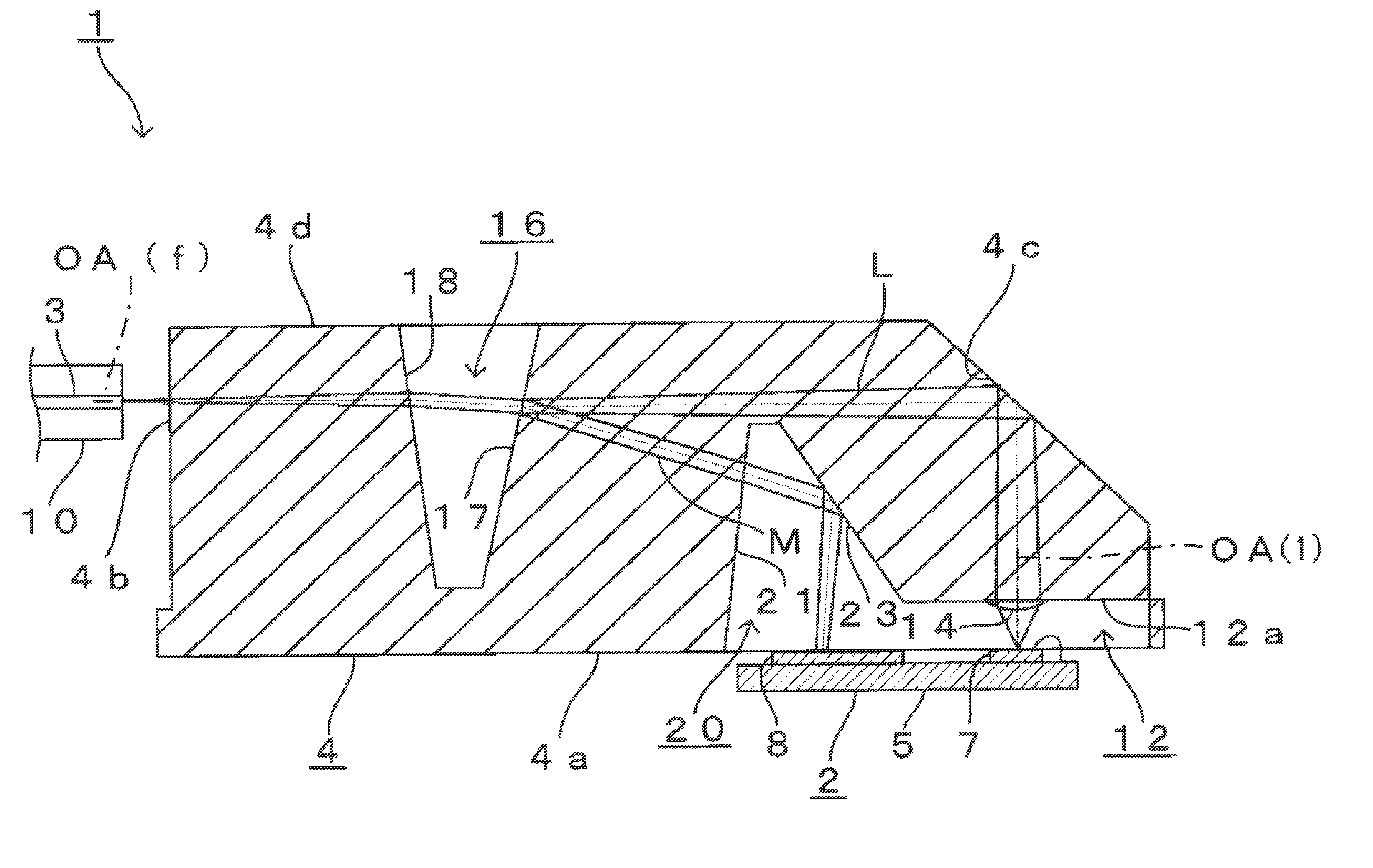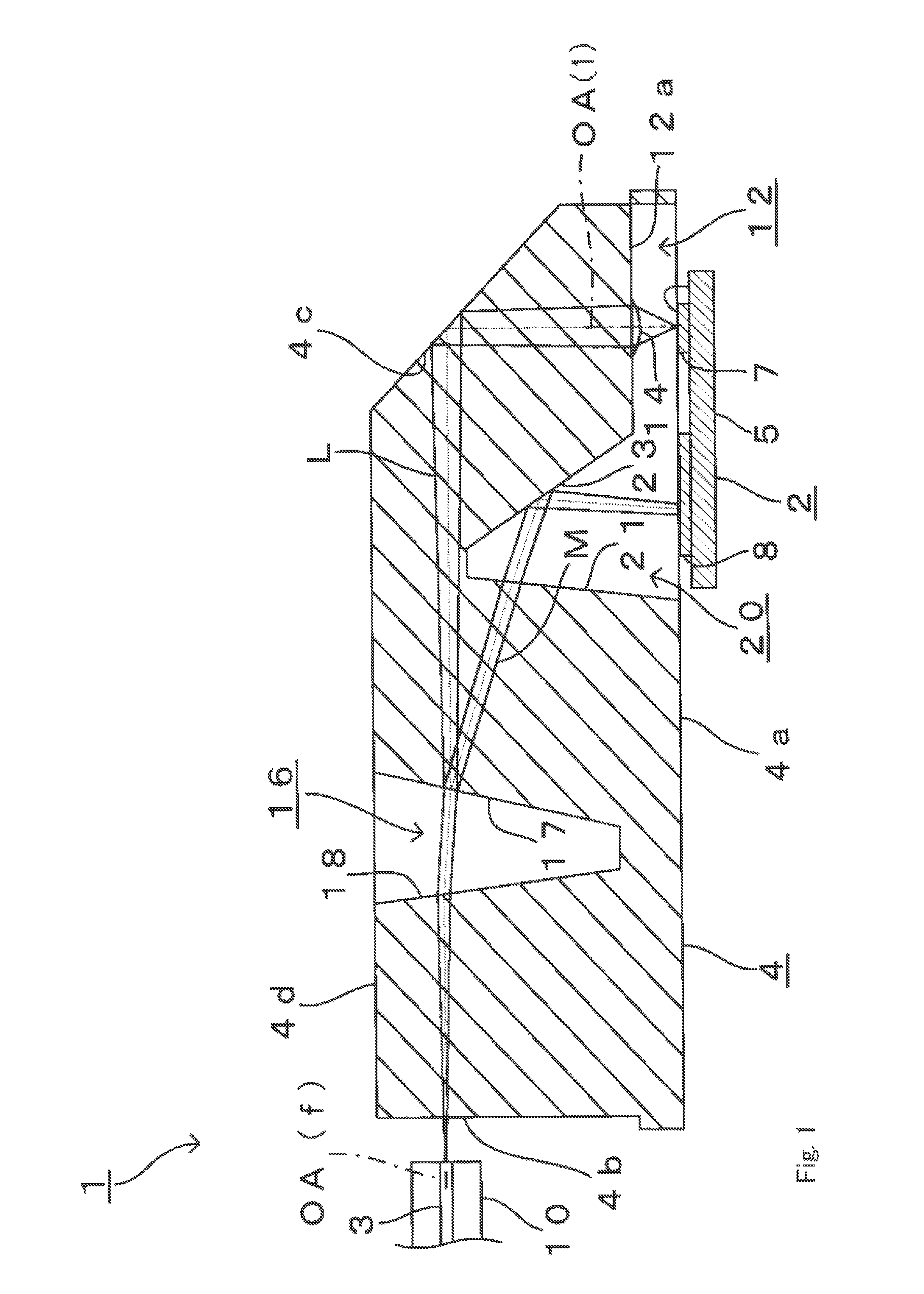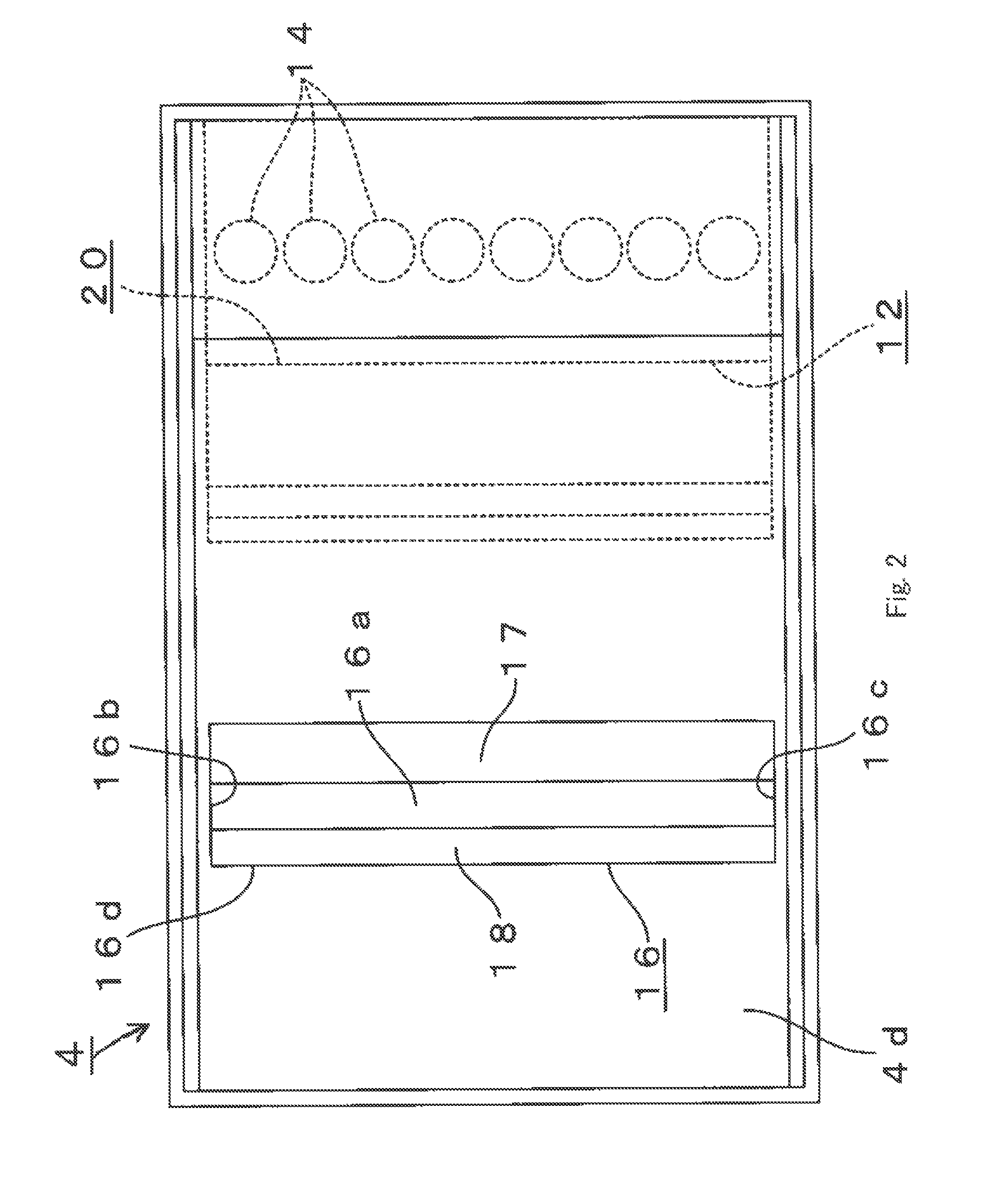Optical module
a technology of optical modules and optical components, applied in the field of optical modules, can solve problems such as disrupting the transmission of communication information, and achieve the effect of reliable monitor light and easy manufacturing by reducing the number of lens surfaces
- Summary
- Abstract
- Description
- Claims
- Application Information
AI Technical Summary
Benefits of technology
Problems solved by technology
Method used
Image
Examples
embodiment 1
Hereinafter, an optical module according to Embodiment 1 of the present invention will be explained with reference to FIG. 1 to FIG. 5.
As shown in FIG. 1, optical module 1 according to the present embodiment is mainly formed with photoelectric converting device 2, optical fibers 3 and lens array 4 arranged between these photoelectric converting device 2 and optical fibers 3. Note that, as shown in FIG. 1, photoelectric converting device 2 faces lens array 4 from below in FIG. 1, and optical fibers 3 face lens array 4 from the left in FIG. 1.
First, photoelectric converting device 2 will be explained in detail. As shown in FIG. 1, photoelectric converting device 2 has, in the surface of semiconductor substrate 5 facing lens array 4, a plurality of (i.e. eight) light emitting elements 7 that emit laser light L (i.e. emit light) in the vertical direction (i.e. in the upper direction in FIG. 1) with respect to this surface. Light emitting elements 7 form a vertical cavity surface emittin...
embodiment 2
Next, the difference of an optical module according to Embodiment 2 of the present invention from Embodiment 1 will be mainly explained with reference to FIG. 6.
Note that, in the drawings used to explain the present embodiment, the same or similar basic configuration as in Embodiment 1 will be explained using the same reference numerals as in FIG. 1 to FIG. 5.
As shown in FIG. 6, optical module 27 according to the present embodiment has second lens surfaces 28 (i.e. convex lens surfaces) formed in left end surface 4b of lens array 4 as a component part of lens array 4. Note that the same number of second lens surfaces 28 as first lens surfaces 14 are aligned at the same pitches as first lens surfaces 14 along the same direction as the direction of alignment of first lens surfaces 14. Further, optical axis OA(2) in each second lens surface 28 matches optical axis OA(f) in the end surface of each optical fiber 3 corresponding to each second lens surface 28. On each second lens surface ...
modified example
Next, a modified example of Embodiment 2 will be explained. With this modified example, the first characteristic, the third characteristic, the surface shape (i.e. flat surface) of second refracting surface 21, and the relationship in width between the fiber-side spot diameter and the monitor-side spot diameter are the same as in FIG. 6, and only the details of the second characteristic are different from the configuration shown in FIG. 6.
That is, the details of the second characteristic according to this modified example include that the optical path length of the first optical path after reflecting / transmission surface 17 (i.e. air conversion length) is formed equal to the optical path length of the second optical path (i.e. air conversion length).
Here, with this modified example, although the optical path length of the first optical path after reflecting / transmission surface 17 is formed longer than the optical path shown in FIG. 6, this optical path length does not exceed the op...
PUM
 Login to View More
Login to View More Abstract
Description
Claims
Application Information
 Login to View More
Login to View More - R&D
- Intellectual Property
- Life Sciences
- Materials
- Tech Scout
- Unparalleled Data Quality
- Higher Quality Content
- 60% Fewer Hallucinations
Browse by: Latest US Patents, China's latest patents, Technical Efficacy Thesaurus, Application Domain, Technology Topic, Popular Technical Reports.
© 2025 PatSnap. All rights reserved.Legal|Privacy policy|Modern Slavery Act Transparency Statement|Sitemap|About US| Contact US: help@patsnap.com



